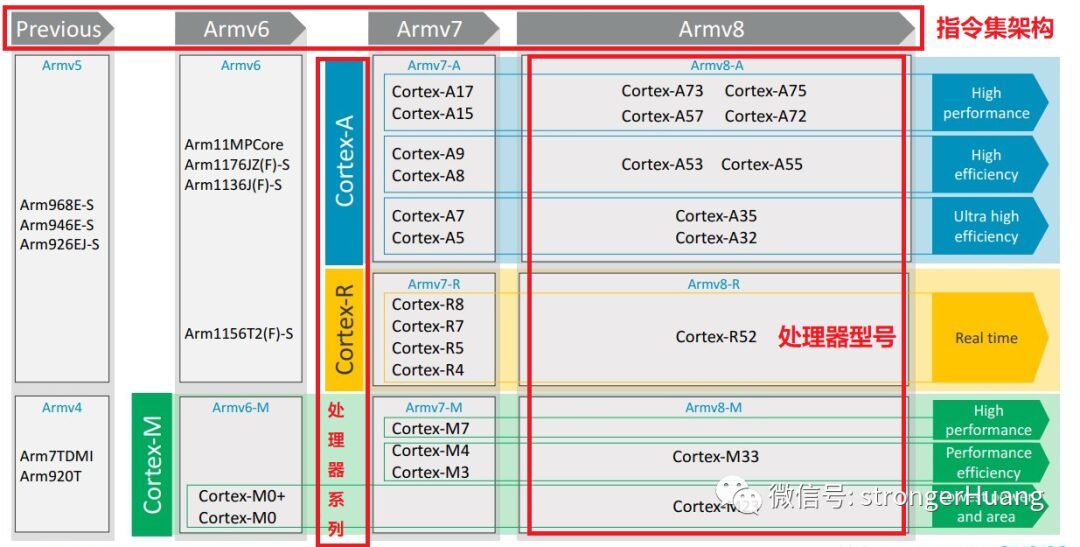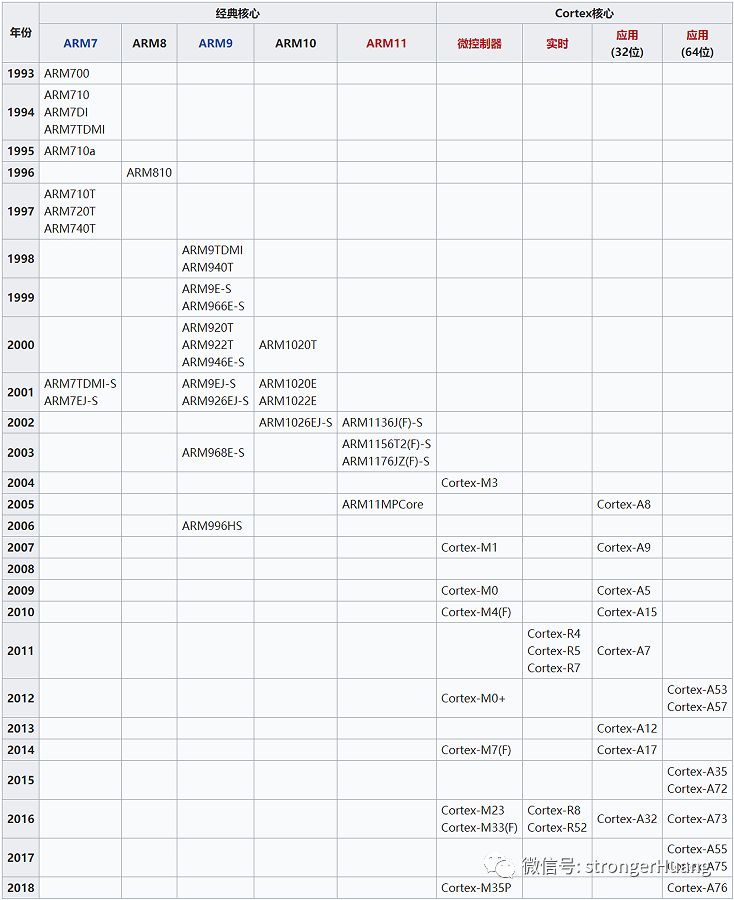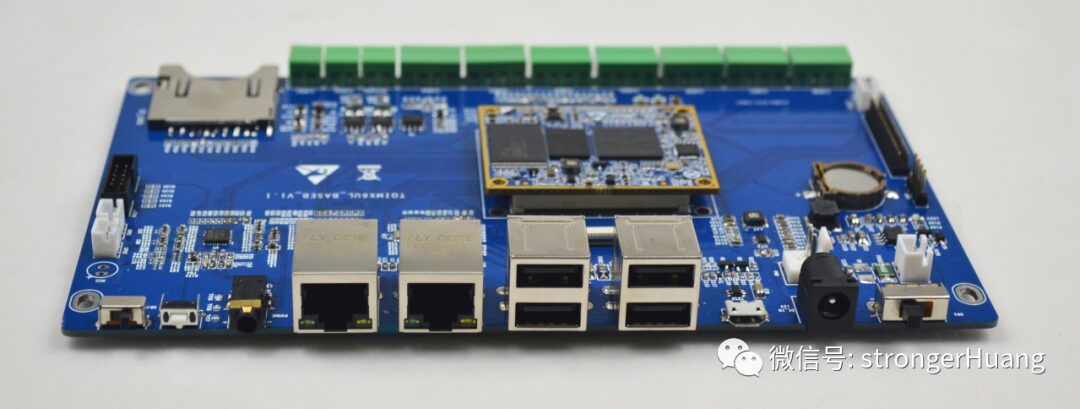Recently, someone asked: What is the relationship between ARM9 and STM32?
ARM Naming Conventions
The ARM naming conventions can be a bit complex, with some changes between early and modern naming rules. For the average person, it’s enough to understand a few major naming conventions.
The naming of ARM can be divided into Instruction Set Architecture, Processor Architecture, and Processor Model three categories:

1. Instruction Set Architecture
The naming format for the instruction set architecture is:
Armv + [n] + [variants] + [x(variants)]Armv: Fixed character, i.e., ARM Version
n: Instruction set version number, to date, 9 series of ARM architecture versions have been released, so n=[1~9] variants: Variants x(variants): Indicates that the specified variants after x are not supported
ARM + [x][y][z] + [variants]x: Processor series, with multiple series such as 6, 7, 9, 11, etc. y: Memory Management/Protection Unit z: Cache Variants have the following letters available: T: Supports Thumb instruction set D: Supports on-chip debugging M: Supports fast multiplier I: Supports Embedded ICE, supports embedded trace debugging E: Supports enhanced DSP instructions J: Supports Jazelle (F): Equipped with Vector Floating Point Unit (VFP) -S: Synthesizable version
-
Cortex-M0, Cortex-M3, Cortex-M4
-
Cortex-R4, Cortex-R5
-
Cortex-A55, Cortex-A73

Differences Between Processors
After understanding the ARM processor naming rules, let’s look at the differences between ARM7, ARM9, S3C2410, STM32, and Cortex-M3.
1. ARM7
ARM7 is a processor series (major version, or ARM7 family), which includes many types of processors.
Most adopt the ARMv4T core architecture, but some processors use ARMv3 or ARMv5TEJ cores. This series adopts the Von Neumann architecture.
The ARM7 series was launched in 1993, with classic ARM7 processors including ARM7TDMI, ARM7EJ-S, etc. (The early STM32 products, STM7, also used the ARM7TDMI 32-bit RISC core).
2. ARM9 and S3C2410
After ARM7 comes ARM9, there was actually a transitional product ARM8 (similar to how Windows jumped from 7 to 10).
ARM9 was still quite popular during my school days, and there are still many learning materials about ARM9 available today.

The classic S3C2410 is actually a processor based on the ARM920T core. After S3C2410, there are S3C2416, S3C2440, etc., which every student learning embedded Linux knows about; many Linux development boards and materials on the market are designed based on these processors.
Currently, many embedded Linux development boards are based on NXP’s iMX.6 processor (Cortex-A9).
3. STM32 and Cortex-M3
STM32 is familiar to those learning microcontrollers and embedded development; it is a processor from STMicroelectronics based on the Cortex-M core, containing multiple series (STM32F0, F1, F4, L0, L1, G0, G4, etc.).
Cortex-M3 is just a core of an ARM processor, and many semiconductor companies develop their products based on the Cortex-M3 core.
Final Thoughts
Finally, for beginners, there is no need to get too caught up in the relationships and differences between these processors.
When in doubt, just choose a currently popular processor to learn from; buy a development board and start learning, writing more code, and thinking.

END
→ Follow for more updates ←